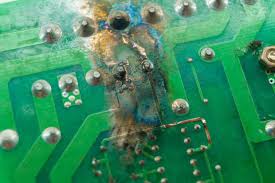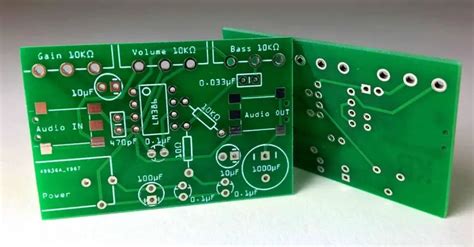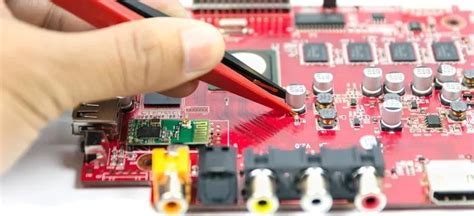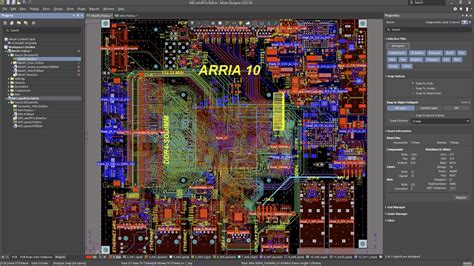Advancements in Printed Circuit Assembly Manufacturing Techniques
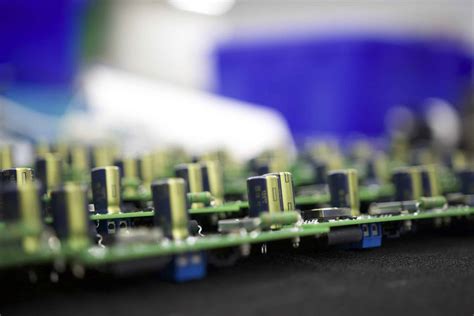
Key Takeaways
The landscape of printed circuit assembly (PCA) is rapidly evolving, driven by innovative techniques and technological advancements that significantly enhance the efficiency and quality of PCB assembly. One of the key aspects to note is the shift from traditional methods, often limited by manual intervention and time constraints, to more automated solutions that optimize production speed and ensure greater precision. This transition not only minimizes errors but also allows for the handling of complex designs inherent in modern electronics. Techniques such as selective soldering, advanced reflow processes, and the implementation of robotics in PCBA have showcased remarkable improvements in throughput and reliability.
Moreover, the rise of digital tools for monitoring and managing production lines plays a pivotal role in maintaining high standards throughout the manufacturing process. These developments ensure that manufacturers can respond to market demands more swiftly while adhering to stringent quality control measures. As we witness these advancements, it becomes clear that they are not merely enhancing productivity but also leading to significant improvements in product performance. By embracing these cutting-edge technologies, companies set themselves on a path toward greater competitiveness and sustainability in an increasingly complex marketplace.
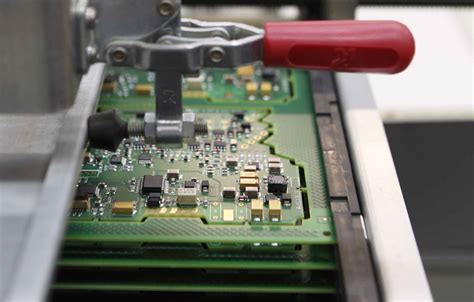
Introduction to Printed Circuit Assembly Manufacturing
Printed Circuit Assembly (PCA), commonly referred to as PCBA, is a fundamental process in the electronics industry, enabling the integration of various electronic components onto a single board. This process is crucial for the functionality of an array of electronic devices, from consumer gadgets to complex industrial machinery. In recent years, advancements in pcb assembly have shifted focus toward innovative manufacturing techniques that enhance productivity and product reliability.
Historically, pcba relied heavily on manual labor and traditional soldering techniques. These methods, while effective, often presented challenges such as inconsistent quality and slower production rates. As technology has evolved, so too have the techniques employed in pcb assembly manufacturing. Automation and robotics now play a pivotal role, streamlining operations and significantly reducing human error.
Moreover, emerging technologies such as artificial intelligence (AI) and machine learning (ML) contribute to real-time quality control during the pcba process. This integration allows manufacturers to identify defects swiftly and reduce waste—ultimately enhancing overall efficiency. The incorporation of these technologies marks a significant shift from traditional practices toward a more sophisticated approach that emphasizes efficiency and quality assurance.
The continuous evolution within the realm of printed circuit assembly manufacturing underscores its vital role in driving innovation across various sectors. As companies seek to improve their pcb assembly processes further, understanding these advancements becomes essential for maintaining competitiveness in an increasingly demanding market landscape.
| Technique | Advantages | Limitations |
|---|---|---|
| Manual Soldering | Flexibility for prototypes | Labor-intensive |
| Wave Soldering | High-speed production | Limited component complexity |
| Reflow Soldering | Suitable for surface mount | Requires precise temperature control |
| Automated Optical Inspection | Enhances quality control | High initial investment |
In summary, recognizing the trends in pcb assembly can help manufacturers align their strategies with market demands while leveraging innovative practices for improved outcomes.
Overview of Traditional Techniques and Their Limitations
The landscape of pcb assembly has historically been dominated by traditional techniques that encompass processes like manual soldering and wave soldering. These methods, while effective in their time, present challenges that often hinder the advancement necessary in today’s fast-paced market. Manual soldering, for instance, can lead to inconsistencies in quality due to variability in the skill levels of operators. This variability limits the scalability and reliability of pcba production, particularly as components become smaller and more complex. Wave soldering, although a cornerstone technique in large-scale production, can sometimes contribute to thermal stress on sensitive components, risking damage and reducing overall yield. Additionally, these methods tend to be labor-intensive, resulting in increased production time and costs. Consequently, industries have been driven to seek innovative solutions that not only address these limitations but also enhance manufacturing efficiency. The transition towards automated processes is a response to the drawbacks of traditional approaches, paving the way for a more robust pcb assembly landscape that emphasizes precision, efficiency, and adaptability.
Innovative Processes in Printed Circuit Assembly
In the rapidly evolving landscape of pcb assembly, innovative processes have emerged to address the challenges posed by traditional manufacturing methods. One significant advancement is the use of advanced placement technology, which optimizes component placement accuracy and speed, thereby enhancing the overall quality of pcba. Techniques like automated optical inspection (AOI) and X-ray inspection have become integral to quality control, allowing for real-time monitoring during assembly and significantly reducing defects. Moreover, the introduction of flexible manufacturing systems enables manufacturers to adapt quickly to changing production demands, resulting in shorter lead times and greater responsiveness to market needs. Techniques such as surface mount technology (SMT) have evolved, providing improved reliability and performance by facilitating the use of more compact components, which is crucial in today’s demand for smaller and more efficient devices. Furthermore, these innovative processes are not only focused on enhancing production efficiency but also emphasize sustainability, with many companies adopting eco-friendly materials and practices within their pcb assembly processes. As these technologies continue to develop, they promise to redefine the boundaries of what is possible in pcba, setting new standards for performance and efficiency across a variety of industries.
Enhanced Efficiency through Automation and Robotics
The integration of automation and robotics in pcb assembly processes has marked a significant transformation in the manufacturing landscape. Automation systems facilitate precise placement of components on printed circuit boards (PCBs), greatly reducing human error and enhancing production speed. This efficiency is further amplified by robotic systems capable of operating continuously, allowing for increased output without the traditional constraints of manual labor. Moreover, advancements in automation technology enable more sophisticated quality control measures, ensuring that each pcba meets stringent performance standards. For instance, automated inspection processes can swiftly identify flaws that may have gone unnoticed in earlier manual checks. As a result, manufacturers can achieve a higher yield rate and reduce waste, ultimately leading to improved profitability. The ability to quickly adapt to changing demands while maintaining high accuracy is vital; therefore, automation and robotics not only enhance efficiency but also position manufacturers to respond dynamically to market needs. The melding of these technologies into pcb assembly showcases a promising evolution that ensures better product performance and long-term sustainability for the industry.
Emerging Technologies Shaping the Future of the Industry
The pcb assembly industry is experiencing a transformation driven by emerging technologies that promise to enhance overall performance and efficiency. One of the key advancements is the integration of Artificial Intelligence (AI) and Machine Learning (ML) into the pcba process. These technologies facilitate predictive maintenance and quality control, allowing manufacturers to adjust processes in real time based on data analytics and machine learning algorithms. As a result, companies can significantly reduce errors that traditionally occur during assembly, leading to better quality products. Furthermore, innovations in 3D printing technology are advancing prototyping capabilities, allowing for rapid iterations in pcb assembly designs. This not only shortens the development cycle but also permits more complex geometries that were previously difficult to achieve through traditional methods.
“Incorporating emerging technologies into pcba processes will lead to a future where production is not only faster but also smarter.”
Additionally, robotics has revolutionized handling materials during assembly processes; advanced robotic systems are now capable of performing intricate tasks with precision that surpasses human capabilities. This means that manufacturers can enjoy heightened efficiency and reduced labor costs while increasing throughput rates. The synergy between these technologies progresses hand in hand with sustainability practices by minimizing waste and energy consumption—an essential consideration for modern businesses aiming to remain competitive while being environmentally conscious. Overall, the ongoing evolution within pcb assembly manufacturing underscores a shift towards more intelligent manufacturing solutions that align with industry demands for higher performance and reliability.
Case Studies: Successful Implementations of New Techniques
In recent years, various companies have successfully adopted innovative techniques in pcb assembly and pcba processes, showcasing significant improvements in efficiency and product performance. For instance, a leading electronics manufacturer implemented advanced automated assembly lines, which reduced production time by over 30%. By integrating robotics into their pcb assembly process, they were able to maintain high precision while scaling up operations to meet increasing demand. Another notable case is a startup that harnessed machine learning algorithms to optimize the design and testing phases of their pcba development. This approach not only minimized defects but also enhanced the reliability of their products in the market. These case studies reflect the transformative potential of new techniques within printed circuit assembly manufacturing, demonstrating that early adopters can achieve substantial competitive advantages by embracing modern innovations.
The Impact of Advancements on Product Performance
The recent advancements in pcb assembly techniques have significantly influenced product performance, leading to profound improvements in the reliability and durability of electronic devices. By integrating innovative processes such as automated soldering and inspection systems, manufacturers can achieve higher precision in pcba production. This results in fewer defects and enhanced product functionality. Furthermore, enhanced efficiency brought about by automation not only accelerates the manufacturing process but also minimizes human error, contributing to consistent quality output. Emerging technologies like advanced materials and smart manufacturing systems facilitate optimized thermal management and energy efficiency. As a result, products can now operate at higher speeds while maintaining performance integrity, addressing some of the challenges faced in traditional printed circuit assembly practices. Overall, these advancements are pivotal in ensuring that electronic devices are not only more effective but also more sustainable, ultimately creating a positive impact on product performance across various industries.

Future Trends in Printed Circuit Assembly Manufacturing
As the pcb assembly industry continues to evolve, several prominent trends are emerging that are set to redefine manufacturing practices. The integration of smart manufacturing concepts and the implementation of Industry 4.0 principles play a significant role in enhancing the efficiency of pcba processes. One notable trend is the increasing adoption of additive manufacturing techniques, which allow for more complex geometries and reduced material waste, thereby advancing design freedom for electronic components. Furthermore, the use of AI-driven analytics is becoming more prevalent, enabling manufacturers to optimize production lines by predicting maintenance needs and minimizing downtime through data-driven decisions.
In addition to these technological advancements, there is a growing emphasis on sustainability within the pcb assembly sector. Manufacturers are increasingly focusing on eco-friendly materials and processes that reduce environmental impact without compromising product performance. Another key trend is the miniaturization of components, driven by consumer demand for smaller and lighter electronic devices, necessitating innovative approaches in assembly techniques.
As these trends continue to develop, companies are prompted to invest in training their workforce to adapt to new technologies while also ensuring quality control remains paramount in production. The future landscape of printed circuit assembly manufacturing is poised for transformation, emphasizing not only enhanced performance and efficiency but also sustainability and innovation at every step of the production process.
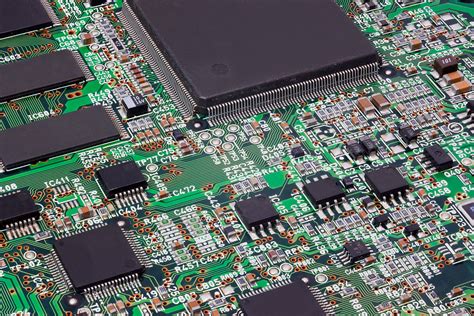
Conclusion
The evolution of printed circuit assembly (PCA) manufacturing has ushered in a new era defined by remarkable innovations and improvements. As we have explored throughout this article, the shift towards advanced techniques in pcb assembly and pcba processes is not merely a trend but a necessity in today’s competitive marketplace. The integration of automation and robotics has significantly heightened production efficiency, allowing for quicker turnaround times without compromising quality. Furthermore, the advent of new technologies, such as AI-driven inspection systems and smart machinery, enhances the reliability of pcba outputs while minimizing errors. These advancements resonate deeply in product performance, enabling manufacturers to meet stringent consumer demands for both quality and functionality. Looking forward, it is evident that the continual refinement of these techniques will not only enhance operational capabilities but also redefine industry standards, leaving an indelible mark on the landscape of printed circuit assembly manufacturing for years to come.
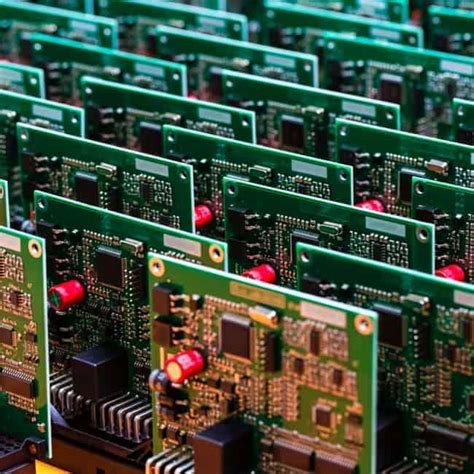
FAQs
What is printed circuit assembly (PCA)?
Printed Circuit Assembly (PCA) refers to the process of soldering electronic components onto a printed circuit board (PCB) to create a functional circuit. This involves various pcba manufacturing techniques that enhance the electrical performance of the final product.
What are the key advancements in pcb assembly techniques?
Recent advancements in pcb assembly techniques include the adoption of advanced robotics, improved automation processes, and enhanced software solutions for design and testing. These innovations have significantly increased production efficiency and reliability.
How does automation improve the pcb assembly process?
Automation in pcba enhances production speeds while minimizing human error, leading to a more efficient workflow. Automated systems can handle repetitive tasks with precision, thereby improving overall product quality.
What role do emerging technologies play in PCB manufacturing?
Emerging technologies such as IoT integration, artificial intelligence, and machine learning are transforming the PCB manufacturing landscape. They provide real-time monitoring and predictive analytics that can optimize production processes and reduce downtime.
Can you explain the benefits of using innovative processes in pcba?
Innovative processes in pcba lead to enhanced flexibility in manufacturing, cost reduction, and increased adaptability to market demands. These methods allow for quicker adjustments to production lines for new products or design changes.



